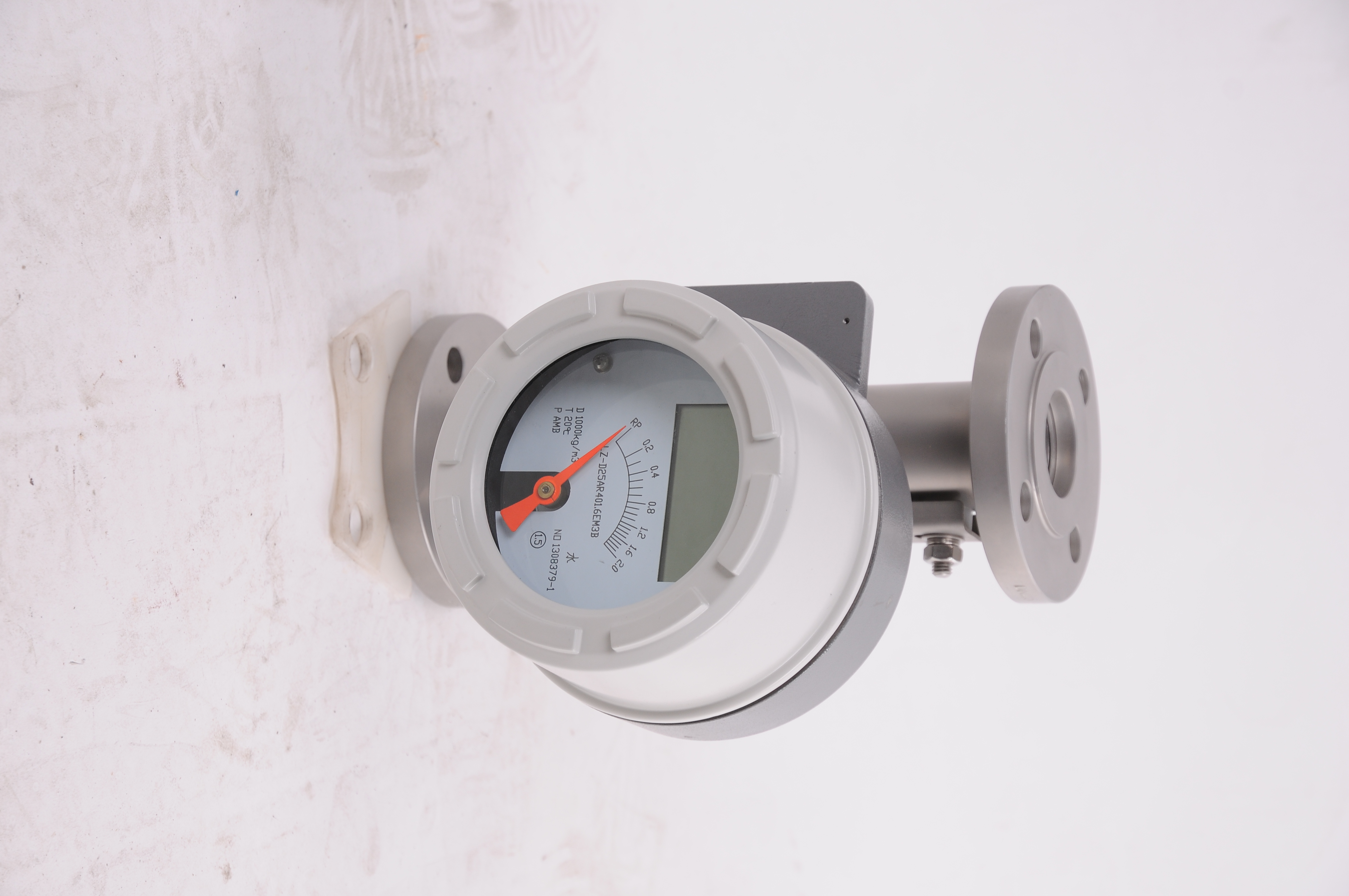①Classified by cone tube material: it can be divided into transparent material cone tube and metal cone tube.⑴Transparent conical tube metal tube float flowmeter: transparent conical tube materials include glass tubes, transparent engineering plastics such as polystyrene, polycarbonate, plexiglass, etc. Among them, glass pipes are most used, but they are easy to break; while engineering plastic pipes are not easy to break, and some are resistant to corrosion by corrosive media such as acid and alkali.The diameter of the transparent tapered tube float flowmeter is 15~40mm. The flow index is directly engraved on the outer wall of the tapered tube, or an indexing scale is installed beside the tapered tube. The tapered tube has a cone smooth surface and a guiding rib (or flat surface). ) Two kinds. The float moves freely in the tapered tube, or moves under the guide of the ribs of the tapered tube. The inner wall of the instrument with a large smooth surface is also guided by a guide rod.⑵Metal tapered tube float flowmeter: The diameter of the metal tube tapered float flowmeter is 15~40mm, and the displacement of the float is transmitted to the conversion part outside the casing by means of magnetic steel coupling. Compared with transparent conical tube float flowmeter. It can be used for higher medium temperature and pressure, and it is not easy to break.In addition, the transparent float flowmeter has several other structures. For example, the transparent straight tube float flowmeter is a deformed structure of the transparent tapered tube float flowmeter, and the flow detection element is composed of an orifice plate and a tapered float plug. There are other types or deformed structures of the metal tube conical tube float flowmeter. Among them, the direct instruction type directly observes and reads the position of the float through the transparent straight pipe and the floating plug; the horizontal installation type can be installed in the horizontal pipe; the straight type is different from the typical structure in the right-angle flow direction, and the flow direction does not need to be changed. It can be directly connected to the vertical pipe and installed Convenient; the floating plug orifice plate type replaces the rotor tapered tube with the floating plug orifice plate. It is more convenient to change the flow specification by changing the floating plug of different taper.②Classification by flowmeter function: it can be divided into on-site indication, pneumatic remote signal output, electric remote signal output, alarm, etc. Transparent tube float flowmeters are all on-site indication types. Sometimes a proximity switch is installed to output upper and lower limit alarm signals. The conversion part of the remote signal output instrument converts the displacement of the float into a current or air pressure analog signal output, which respectively become a gas remote float flowmeter and an electric remote float flowmeter.③ Classification according to the connection with the pipeline: it can be divided into hose connection, flange connection, and threaded connection. There are three connection methods for the transparent tube float flowmeter. Among them, hose connection is often used for instruments with a diameter of 10mm or less and places with low working pressure; threaded connections are often used for instruments with a diameter of 40mm or less, and the scope of application is not wide; flange connection is used for The most common applications are for instruments with a diameter of 15~100mm. Metal tube float flowmeters are usually flanged, and individual models are connected by thread.④ Classification according to the tested fluid: it can be divided into liquid, gas, and steam. Most float flow meters can measure both liquid and gas in the same instrument. To measure steam, only a specially designed metal tube float flowmeter can be used, or additional components can be added to the standard instrument, such as adding a liquid damping piece with a heat sink, and installing a heat sink at the connection with the indicating conversion part.⑤ Classified by purpose: It can be divided into basic type, jacket insulation type, explosion-proof type, corrosion-resistant type, and blowing type. The basic type is the most widely used. Jacket insulation type is used for occasions where the temperature in the pipeline is significantly higher (or lower) than the ambient temperature. Used for explosive gas or dust, the electric remote float flowmeter adopts explosion-proof type. At present, there are explosion-proof design structures and intrinsically safe explosion-proof design structures in China. Corrosion-resistant float flowmeters are made of engineering plastics such as polytetrafluoroethylene, etc., for the structural parts and floats in contact with the medium. The flow rate of the blowing type is small, the air is 20~3000L/h, and the water is 0.3~100L/h, and the accuracy requirements are not high. The blowing float flowmeter is integrated with a small self-operated differential pressure regulator, which makes the flow change caused by the pressure fluctuation of the power source or the disturbance of the downstream parameter change, and self-regulates to maintain a constant flow.⑥ Classification according to the way the measured fluid passes: it can be divided into full flow type and split flow type. The full flow type refers to the instrument in which all the fluid to be measured flows through the float flowmeter. The split flow type means that only part of the fluid to be measured flows through the flow detection part such as the float. The split flow type float flowmeter is a combination of a standard orifice plate installed on the main pipeline and a small diameter float flowmeter. It is used for larger flow rates with pipe diameters greater than 50mm. And as long as the place indicated on the spot.
Post time: 21-09-21
